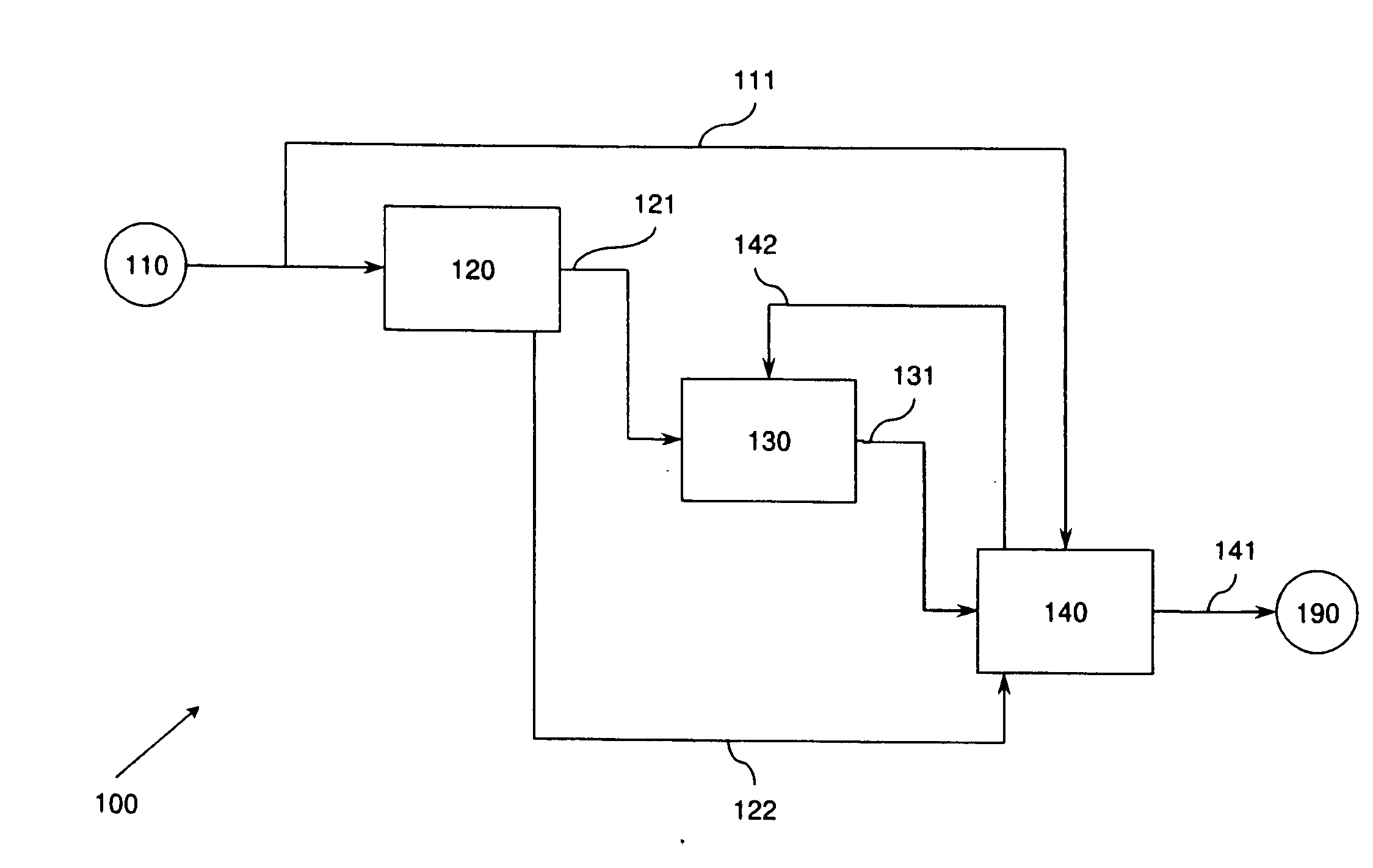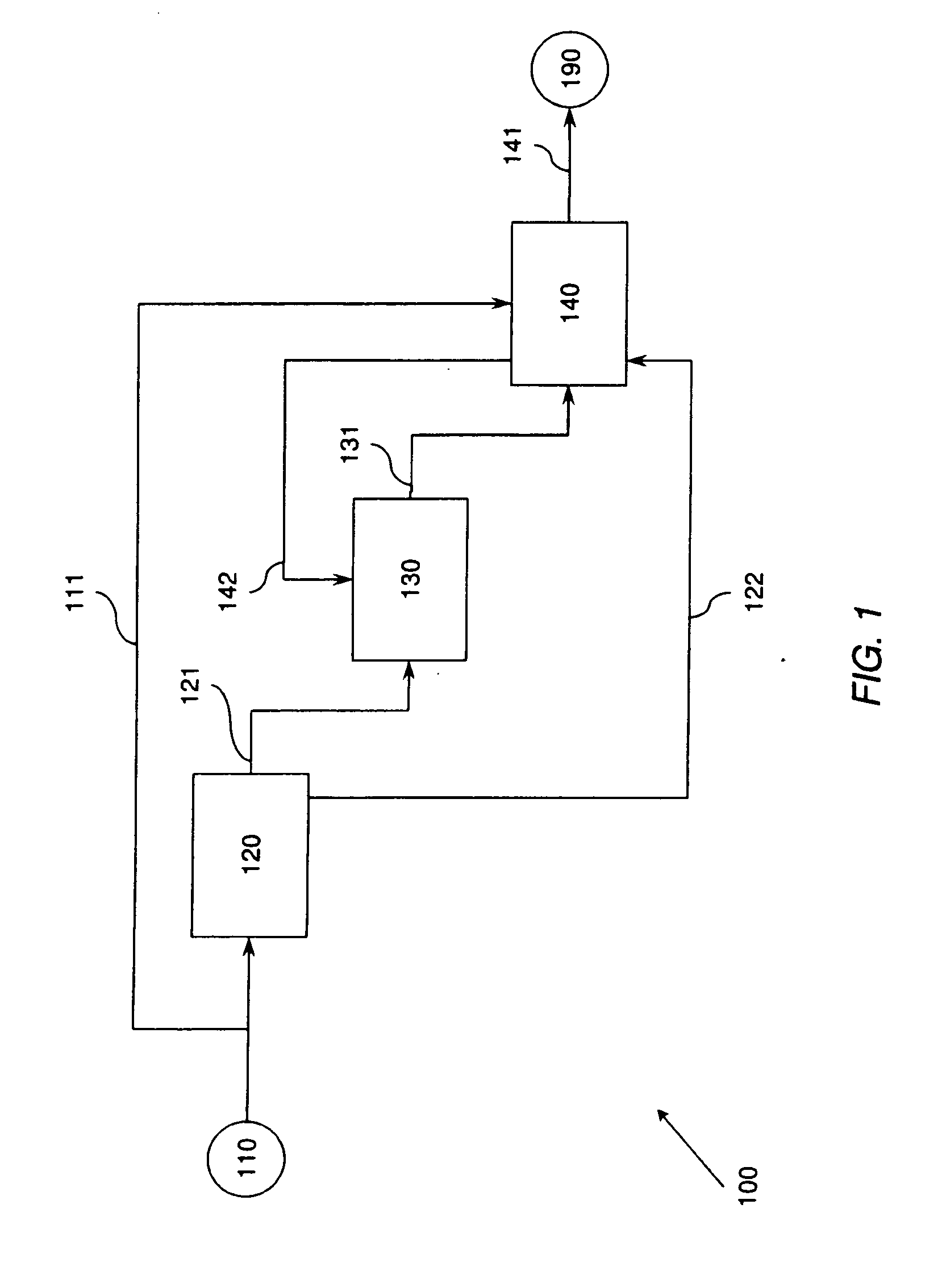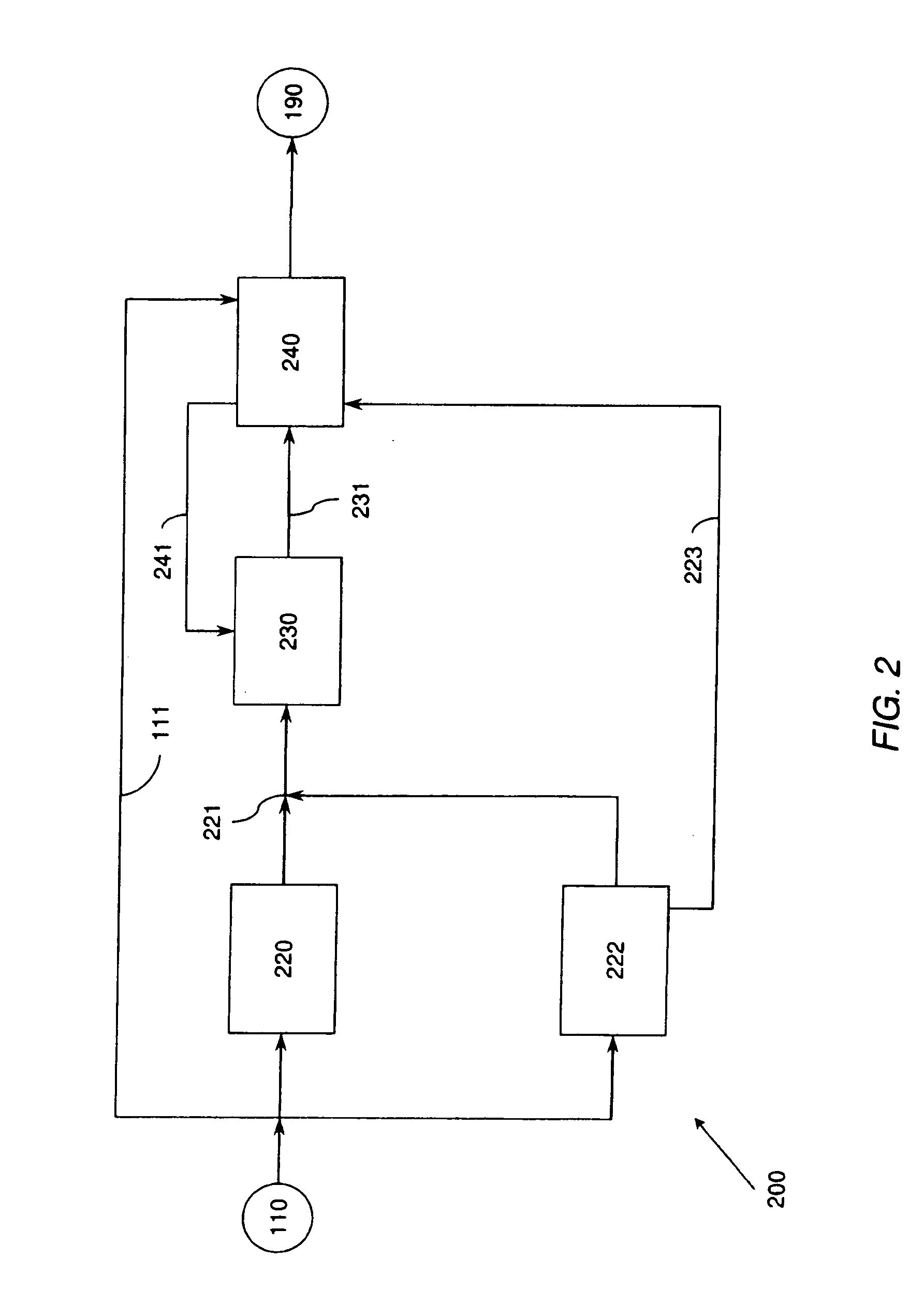Low energy system and method of desalinating seawater
a low energy system and seawater technology, applied in electrodialysis, diaphragms, refrigeration components, etc., can solve the problems of high power consumption of thermal processes, high power consumption of reverse osmosis technology, etc., and achieve low power consumption and energy saving
- Summary
- Abstract
- Description
- Claims
- Application Information
AI Technical Summary
Benefits of technology
Problems solved by technology
Method used
Image
Examples
example 1
[0099]In this example, the expected potential that can be generated by utilizing concentration cell pairs in some configurations of the devices of the invention. Table 1 below provides calculated potentials based on concentrations of streams introduced into the half-cell compartments according to the Nernst equation at room temperature.
[0100]The table below shows that the ratio of concentrations of the feed streams is preferably as large a possible to increase the generated potentials. For example, the concentration ratios can be at least about 2, preferably at least about 3, more preferably at least about 5, and even more preferably at least about 10.
TABLE 1CONC1CONC2E (volts)E (mV)11001010.05959.110010.118118.21,00010.177177.410,00010.024236.5210.01818.8310.02828.2410.03635.6510.04141.3610.04646.0710.05050810.05353.4910.05656.45.6810.04444.62.310.02121.4
[0101]The following listing provides the ionic concentrations of typical seawater. The predominant cationic species in seawater a...
example 2
[0102]This example provides exemplarily electrodialysis trains that can be utilized in accordance with some aspects of the invention.
[0103]FIG. 10A exemplarily illustrates train of electrodialysis devices that can be used in the first train 220 of the first treatment stage. Train 220 can comprise multiple stages, each operating at optimum voltage and current density to minimize energy use. As illustrated, the train 220 can have four stages of electrodialysis devices.
[0104]In the first train, the depletion compartment can be serially connected and dilution streams are in series, with the product from one stage serving as a feed to downstream depletion compartments. Fresh seawater is used as feed to each of the associated concentrate compartments in each stage to minimize any concentration difference between the dilute and concentrate compartments in each stage.
[0105]Each stage can also have a number of ED modules operating in parallel.
[0106]The second train 222 can also comprise mult...
example 3
[0108]This example describes expected performance of a system utilizing the techniques of the invention as substantially represented in FIG. 3 with a device schematically illustrated in FIG. 4 for desalinating seawater at a rate of about 8,000 m3 / hr.
[0109]Two trains of electrodialysis (ED) device were simulated with finite element calculations with a softener and an electrodeionization (EDI) device. Several stages were used in the finite element simulation; stages 1-5 were designed to generate a brine stream with at least 10% NaCl; and the final two stages were designed to reduce the dissolved solids concentration of the product stream by the softener and the electrodeionization device. Table 2 and 3A-3C below list the simulation parameters and calculated results. Table 4 summarizes the predicted energy requirement for the ED / EDI system.
[0110]FIG. 7 graphically illustrates the expected energy required in desalinating seawater to produce product water of various target characteristic...
PUM
| Property | Measurement | Unit |
|---|---|---|
| temperature | aaaaa | aaaaa |
| gas constant | aaaaa | aaaaa |
| concentration | aaaaa | aaaaa |
Abstract
Description
Claims
Application Information
 Login to View More
Login to View More - R&D
- Intellectual Property
- Life Sciences
- Materials
- Tech Scout
- Unparalleled Data Quality
- Higher Quality Content
- 60% Fewer Hallucinations
Browse by: Latest US Patents, China's latest patents, Technical Efficacy Thesaurus, Application Domain, Technology Topic, Popular Technical Reports.
© 2025 PatSnap. All rights reserved.Legal|Privacy policy|Modern Slavery Act Transparency Statement|Sitemap|About US| Contact US: help@patsnap.com



